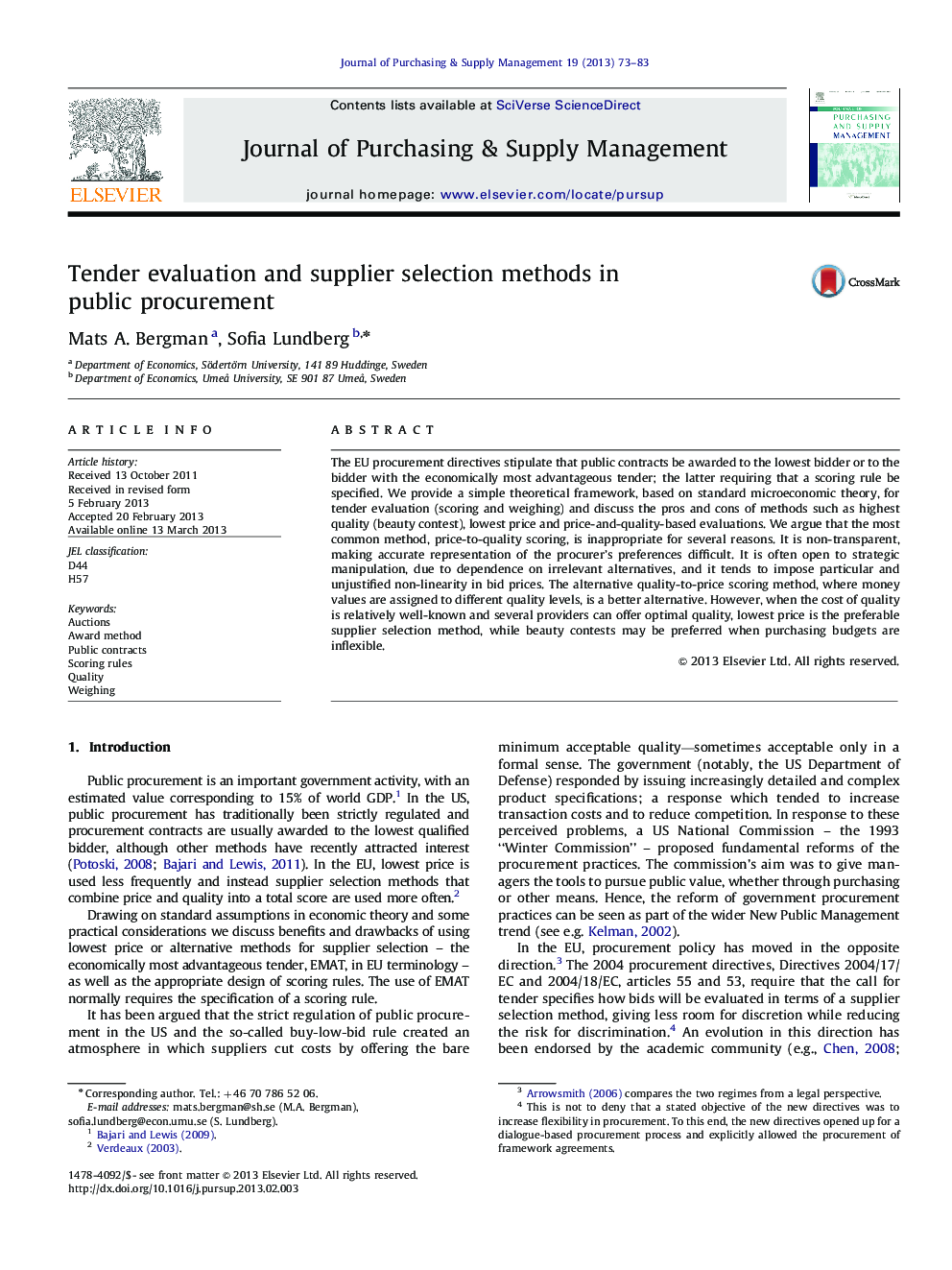| Article ID | Journal | Published Year | Pages | File Type |
|---|---|---|---|---|
| 1020815 | Journal of Purchasing and Supply Management | 2013 | 11 Pages |
The EU procurement directives stipulate that public contracts be awarded to the lowest bidder or to the bidder with the economically most advantageous tender; the latter requiring that a scoring rule be specified. We provide a simple theoretical framework, based on standard microeconomic theory, for tender evaluation (scoring and weighing) and discuss the pros and cons of methods such as highest quality (beauty contest), lowest price and price-and-quality-based evaluations. We argue that the most common method, price-to-quality scoring, is inappropriate for several reasons. It is non-transparent, making accurate representation of the procurer's preferences difficult. It is often open to strategic manipulation, due to dependence on irrelevant alternatives, and it tends to impose particular and unjustified non-linearity in bid prices. The alternative quality-to-price scoring method, where money values are assigned to different quality levels, is a better alternative. However, when the cost of quality is relatively well-known and several providers can offer optimal quality, lowest price is the preferable supplier selection method, while beauty contests may be preferred when purchasing budgets are inflexible.
► Lowest price is set against other methods for allocating public contracts. ► Economic theory is used to inform the design of the bid selection mechanism. ► When price and quality are combined into a total score quality-to-price models are recommended. ► Quality differentials should be given a value while weighing is redundant. ► A large share of 189 public procurements are found to rely on deficient selection mechanism.
